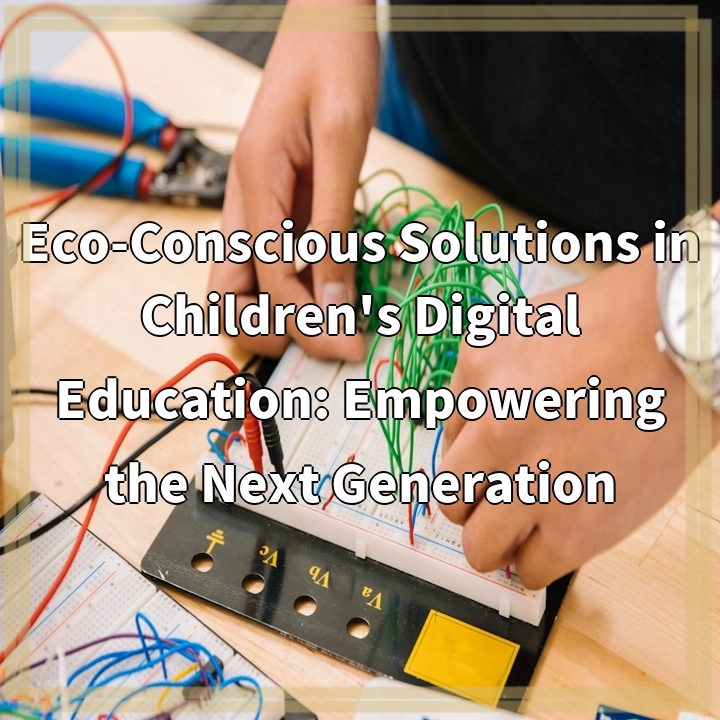
What it is:
In today’s digital age, as more and more children are immersed in technology, there is a growing need for incorporating eco-conscious solutions into their digital education. Eco-conscious solutions in children’s digital education refers to integrating environmentally friendly practices, principles, and content into educational platforms, apps, and online resources aimed at children. This approach aims to raise awareness about environmental issues, promote sustainable behaviors, and empower the next generation to become advocates for the planet.
Real-World Problems:
Despite the numerous benefits of digital education, there are several real-world problems that need to be addressed when it comes to incorporating eco-conscious solutions:
1. Lack of Environmental Education:
Many children’s digital education platforms overlook or inadequately cover environmental education. This limits children’s exposure to important environmental concepts such as climate change, pollution, deforestation, and biodiversity loss. Without a proper understanding of these issues, children may grow up without the knowledge and tools needed to address and mitigate environmental problems.
2. Digital Waste and Energy Consumption:
The use of digital devices and online platforms requires energy and resources, contributing to carbon emissions and electronic waste. Children’s digital education programs need to consider the environmental impact of their platforms and take steps to minimize energy consumption and promote responsible disposal of electronic devices.
3. Lack of Engagement and Action:
Engaging children in environmental issues can be a challenge when it comes to digital education. Many educational apps and platforms focus on passive consumption rather than active participation and action. To address this problem, eco-conscious solutions should provide interactive and immersive experiences that encourage children to actively engage with environmental topics and inspire them to take real-world actions to protect the planet.
4. Inaccurate or Biased Information:
Children’s digital education platforms must ensure that the information presented is accurate, up-to-date, and free from bias. There is a risk of misinformation or greenwashing, which can misguide children and hinder their ability to understand complex environmental issues. It is essential to verify the credibility of sources and provide diverse perspectives to foster critical thinking skills and a well-rounded understanding of environmental topics.

Solutions:
Addressing the real-world problems associated with eco-conscious solutions in children’s digital education requires proactive measures and collaboration among educators, developers, and policymakers. Here are some potential solutions:
1. Integration of Environmental Education:
Educational platforms should prioritize the integration of environmental education into their curricula. This can be achieved by incorporating age-appropriate content that covers a wide range of environmental topics, fostering a deeper understanding of the natural world, and promoting sustainable practices.
2. Sustainable Design and Technology:
Developers and designers should prioritize sustainability in the creation of digital education platforms. This involves minimizing energy consumption, optimizing device resources, and using renewable energy sources where possible. Additionally, incorporating features that promote responsible device use and recycling can further contribute to reducing digital waste.
3. Interactive and Engaging Experiences:
To enhance engagement and empower children, eco-conscious digital education solutions should provide interactive and immersive experiences. This can include gamification, virtual reality, or augmented reality elements that enable children to actively participate, solve environmental challenges, and see the impact of their actions.
4. Credible and Diverse Content:
Ensuring the accuracy and credibility of information is crucial in children’s digital education. Platforms should regularly vet and update their content, verify sources, and provide diverse perspectives on environmental issues to foster critical thinking and a comprehensive understanding of the complexities surrounding environmental challenges.
5. Collaboration and Partnerships:
Collaboration between educators, developers, policymakers, and environmental organizations is essential to drive innovation and implement eco-conscious solutions in children’s digital education. By working together, stakeholders can share knowledge, resources, and best practices, leading to more effective and impactful approaches.















